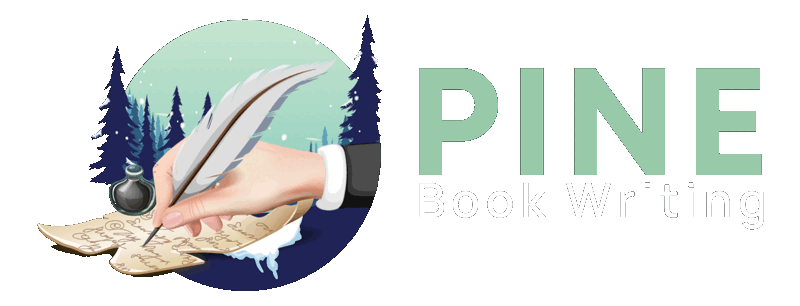A Brief Understanding of Proofreading: What, Why, and How to Proofread?

What is Proofreading?
Proofreading is the final phase to check a book's text before it gets published, or a proofreader's role comprises comparing the book pages to the written text. They also check formatting errors, along with checking spelling and grammatical mistakes.
Why Is Proofreading Important?
A good quality write-up cannot be done without professional-level proofreading. With the correct proofreading, you can enhance your voice and words to convey to message perfectly to your audience. No author/writer would want their readers to have trouble understanding the message. So, authors and publishers use professional proofreading services to provide readers with a pleasant reading experience.
Proofreading takes time, but it pays off by making your writing more polished, easy to read and engaging. Proofreading is as crucial as a little punctuation error can affect a sentence's complete meaning. Here are the two versions of a sentence, a meme-based example of it:
"Let's eat Grandma!"
"Let's eat, Grandma!"
You must be thinking about AI-powered proofreading tools that help check grammatical and spelling errors in text, but they are not always correct, as they can't match a human's expertise. So, for a thorough draft assessment, you must hire a professional proofreading service to make your literary work fully flawless and readable. Our words play an important role in conveying our message to readers in a way that we do if we were standing in front of them.
How to Proofread Perfectly
Now that you know the importance of proofreading in writing, you might be thinking of doing proofreading yourself. If so, why not? Note down the provided tips below on how to proofread effectively.
Don't rely on AI-powered tools:
Although these tools are wonderful in their work, fully relying on them could cost you. They often ignore even the most basic mistakes or suggest wrong changes. However, using the spellcheckers as the first step can be good, but you still need to have a detailed eye on the draft. AI-based spell and grammar checkers have significant limitations, so leaving everything to them could not be a safer way to proofread.
Fix one error at a time:
Proofreading requires time and effort, but gives excellent results. Go slowly and concentrate type of mistake at one point. Most writers risk losing their concentration and missing critical errors while trying to address and correct all of them at once.
Read text aloud:
Reading words aloud is the most underrated practice. But it is not ignorable. Reading words aloud helps you understand if your words match the tone or style you want to convey. Even professional proofreaders use it to make their work exceptional.
Split your text into different sets:
Create different sets of your text and work on one by one. Focus on one piece of text and take a break before moving to the next. You should concentrate on one item at a time instead of the full work at once.
Circle Punctuation Mark:
This method is among the most dependable for finding errors in punctuation, even if it could seem overkill. Circling every punctuation mark encourages the reader to analyze the accuracy of everyone.
Point out the mistakes Repeatedly:
Reviewing your work often is a great approach to proofreading. It will teach you about your writing style and areas for development. You fix your mistakes more quickly the more times you see them.
Unknown Homophones:
Proofreaders find great difficulty with homophones—that is, phonologically similar words with different meanings. And every skilled proofreader has to know them.
Comma Splices:
Two independent clauses connected with a comma causes a comma splice:
“The researchers repeated the test; it produced the same results.”
Here we have two sentences joined just with a comma. This is somewhat prevalent in informal writing; consequently, rookie proofreaders may find it simple to ignore, yet it is a mistake. In this situation, it is quite important to pay close attention to sentence construction. Separate clauses connected by a comma have to be changed/edited.
Contradictions:
Many times, new proofreaders focus on mistakes or improper punctuation. This could, however, lead to missing discrepancies in a document, which can be as problematic in some cases.
Misplaced or Absent Apostrophes:
Because apostrophes are so flexible, errors sometimes go unnoticed. Typical cases are "its" (meaning the possessive form of it) and "it's" (meaning a contraction of it is or it has), which are so routinely used that it's easy to overlook conflicts between them.
Introduced Mistakes:
Proofreading's cardinal sin is introducing mistakes into a work that never existed when you started! But if you're not careful, this is really easy to achieve.
For instance, when editing a paper, you can unintentionally delete the space between sentences. Maybe you're using Track Changes and the markup lets you ignore a mistake in one of your changes. Perhaps it's just a typo in a comment you wrote anywhere.
Conclusion
In summary, you can never neglect the importance of proofreading after you write up. Proofreading ensures that your draft is up to the mark, ready to publish, and your message is now ready to be conveyed the way you actually want. Although there are several AI tools available to help you proofread, relying on them could be dangerous as they have many limitations and most importantly, they are not able to oversee your work than a human can. There are several ways to self-proofread your work, like reading your work aloud, focusing on one mistake at once, and splitting your work/text into several parts. Apart from all that, if you are unable to do it yourself, there are many publishing and writing agencies offering professional proofreading services to help authors thrive in their publishing careers.
